The Parable of the Talking Dog - Terrence Sejnowski
 Terrence Sejnowski writes: "One of my favorite stories is about a chance encounter on the backroads of rural America when a curious driver came upon a sign: “TALKING DOG FOR SALE.” The owner took him to the backyard and left him with an old Border Collie.
Terrence Sejnowski writes: "One of my favorite stories is about a chance encounter on the backroads of rural America when a curious driver came upon a sign: “TALKING DOG FOR SALE.” The owner took him to the backyard and left him with an old Border Collie.
Clash of the Titans - Peter O'Kelly at TUG 2010
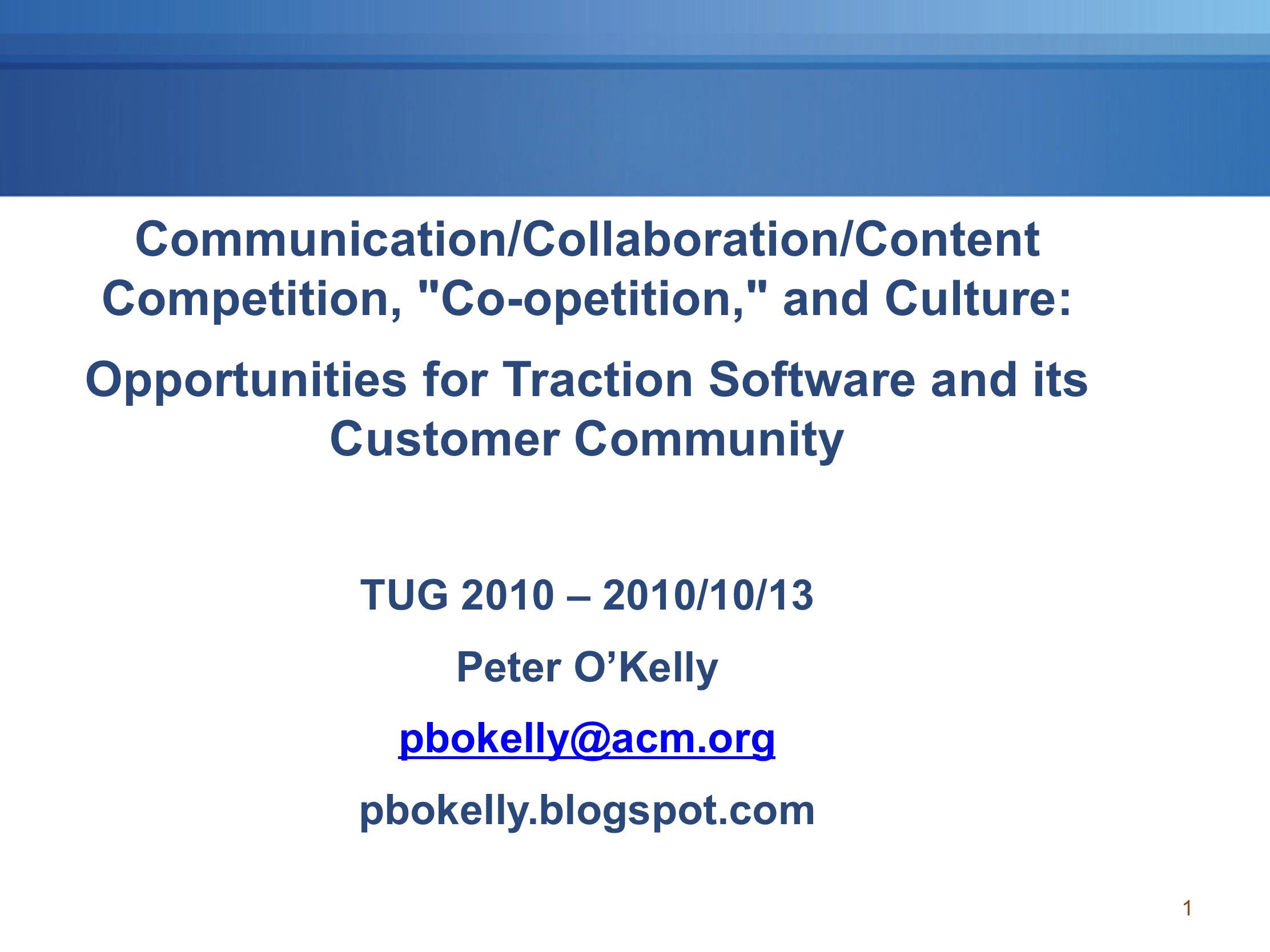 I'm happy to present a transcript and quotes from Peter O'Kelly's TUG 2010 talk Communication / Collaboration / Content Competition, "Co-opetition," and Culture: Opportunities for Traction Software and its Customer Community. Or, as I'll call it here Clash of the Titans. Peter draws on his career as Lotus Notes product manager at Lotus Development Corporation and IBM, IBM Director of Business Development, Groove Networks product manager, MacroMedia vice president of strategy, Microsoft Solutions Architect, and senior analyst or director with the Patricia Seybold Group, the Burton Group, and O'Kelly Associates - see Peter's LinkedIn page and personal blog. I asked Peter to write a 'Where are they now' follow up post, and he cheerfully agreed! Look for it here next week.
I'm happy to present a transcript and quotes from Peter O'Kelly's TUG 2010 talk Communication / Collaboration / Content Competition, "Co-opetition," and Culture: Opportunities for Traction Software and its Customer Community. Or, as I'll call it here Clash of the Titans. Peter draws on his career as Lotus Notes product manager at Lotus Development Corporation and IBM, IBM Director of Business Development, Groove Networks product manager, MacroMedia vice president of strategy, Microsoft Solutions Architect, and senior analyst or director with the Patricia Seybold Group, the Burton Group, and O'Kelly Associates - see Peter's LinkedIn page and personal blog. I asked Peter to write a 'Where are they now' follow up post, and he cheerfully agreed! Look for it here next week.
More Observable Work - Transcribing Jim McGee's TUG 2010 Keynote
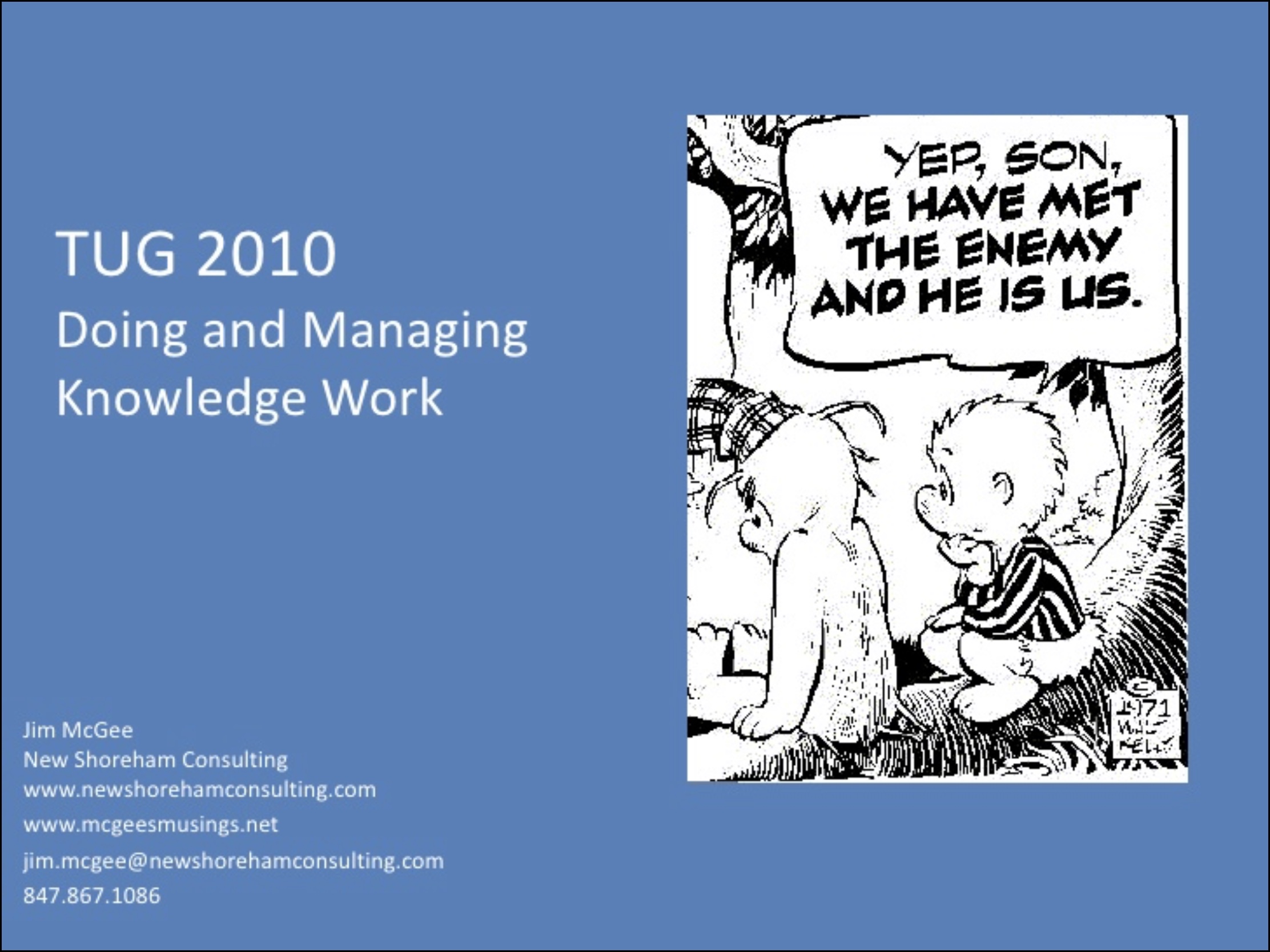 Working from home like much of the world, I thought it would be a good time to try out a new tool to transcribe Jim McGee's Doing and Managing Knowledge Work TUG 2010 keynote. The 2010 Traction User Group theme was Observable Work, with Jim's opening keynote, a closing keynote by Jon Udell, and a four hour Observable Workshop moderated by Jon on the last morning of the meeting, see 12-15 Oct 2010 | Fifth Annual Traction User Group Meeting, TUG 2010 Newport
Working from home like much of the world, I thought it would be a good time to try out a new tool to transcribe Jim McGee's Doing and Managing Knowledge Work TUG 2010 keynote. The 2010 Traction User Group theme was Observable Work, with Jim's opening keynote, a closing keynote by Jon Udell, and a four hour Observable Workshop moderated by Jon on the last morning of the meeting, see 12-15 Oct 2010 | Fifth Annual Traction User Group Meeting, TUG 2010 Newport
A Fabric, not a Platform
 Apple and Google are competing to build a fabric that connects everything you own and use, working outward from the globally meshed supercomputer you carry in your pocket. Both apply deep learning technology to AI assistants, and are opening up their AIs and bots to other apps, bots, and cloud services. This richly connected fabric makes bots useful and AI assistants valuable by teaching them how to identify objects you're talking about as well as understand what you want done. The same applies at work. Making this happen requires a shift from the traditional definition of a platform to a fabric which makes it possible to connect people and the actionable objects they use, in context.
Apple and Google are competing to build a fabric that connects everything you own and use, working outward from the globally meshed supercomputer you carry in your pocket. Both apply deep learning technology to AI assistants, and are opening up their AIs and bots to other apps, bots, and cloud services. This richly connected fabric makes bots useful and AI assistants valuable by teaching them how to identify objects you're talking about as well as understand what you want done. The same applies at work. Making this happen requires a shift from the traditional definition of a platform to a fabric which makes it possible to connect people and the actionable objects they use, in context.
Introducing impi! - Pierre Bienvenüe
![]() I'm happy to introduce Pierre Bienvenüe, founder of impi Business Improvement Solutions Pty, a South African business improvement firm and TeamPage solution partner since 2012. Pierre has great experience in helping mid-size companies organize and run effective quality improvement programmes. impi! works with clients as partners from concept definition, initial rollout, through improvement of the quality program itself. Pierre has worked with Traction Software and clients to develop templates, plug-in extensions, and a methodology for using TeamPage to support the impi! business improvement model, with solid results to report. This post is an introduction. You'll hear more from Pierre as an expert guest blogger on this page, in Traction Software's TeamPage customer forums (free registration), and across the web.
I'm happy to introduce Pierre Bienvenüe, founder of impi Business Improvement Solutions Pty, a South African business improvement firm and TeamPage solution partner since 2012. Pierre has great experience in helping mid-size companies organize and run effective quality improvement programmes. impi! works with clients as partners from concept definition, initial rollout, through improvement of the quality program itself. Pierre has worked with Traction Software and clients to develop templates, plug-in extensions, and a methodology for using TeamPage to support the impi! business improvement model, with solid results to report. This post is an introduction. You'll hear more from Pierre as an expert guest blogger on this page, in Traction Software's TeamPage customer forums (free registration), and across the web.
Chris Nuzum Hyperkult XXV Video | Tripping Up Memory Lane
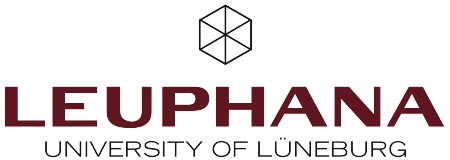 Watch this video of Chris Nuzum's Tripping Up Memory Lane talk at Hyperkult 2015, University of Lüneburg, 10 July 2015. Traction Software CTO and co-founder Chris Nuzum reviews hypertext history, his experience as a hypertext practitioner, and the core principles of Traction TeamPage.
Watch this video of Chris Nuzum's Tripping Up Memory Lane talk at Hyperkult 2015, University of Lüneburg, 10 July 2015. Traction Software CTO and co-founder Chris Nuzum reviews hypertext history, his experience as a hypertext practitioner, and the core principles of Traction TeamPage.
Daily Report 日報 = Observable Work: Takashi Okutsu
 Takashi Okutsu of Traction Software's Japanese Business Office recently posted an update to his Daily Report TeamPage plugin. Takashi writes: "In some Japanese companies, it is common to look back what an employee did in the day, write a summary, and submit it to his/her boss. This is called "日報" (daily report or daily journal) and it's a way of sharing information between employees and bosses in the hierarchy. If you are interested in the ways of business in Japanese companies, you may find this blog post interesting." This example of Observable Work is very simple to understand and use. Quality Management and other TeamPage solutions follow the same pattern.
Takashi Okutsu of Traction Software's Japanese Business Office recently posted an update to his Daily Report TeamPage plugin. Takashi writes: "In some Japanese companies, it is common to look back what an employee did in the day, write a summary, and submit it to his/her boss. This is called "日報" (daily report or daily journal) and it's a way of sharing information between employees and bosses in the hierarchy. If you are interested in the ways of business in Japanese companies, you may find this blog post interesting." This example of Observable Work is very simple to understand and use. Quality Management and other TeamPage solutions follow the same pattern.
Shaka, When the Walls Fell
"Pooh?" said Piglet.
"Yes, Piglet?" said Pooh.
"Darmok and Jalad at Tanagra," said Piglet.
"Shaka, when the walls fell," said Pooh.
— Michael G. Munz (@TheWriteMunz) November 17, 2015Original Traction Product Proposal
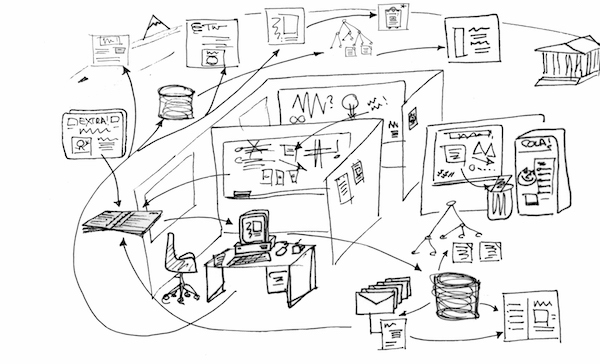
I hope you'll enjoy reading the original Traction Product Proposal, dated October 1997. Many early Traction concepts carried over directly to the Traction® TeamPage product first commercially released in July 2002, but we've also learned a lot since then - as you might hope! The Proposal and its Annotated References may be helpful to students interested in the history and evolution of hypertext.
Teampage hypertext journal: Design concepts, by Takashi Okutsu
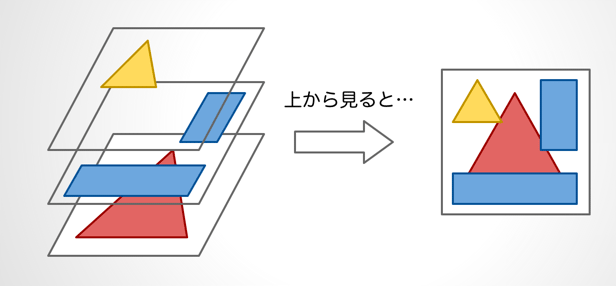
Takashi Okutsu of Traction Software's Japanese Business Office wrote a blog post, Teampage hypertext journal: Design concepts. Starting from Chris Nuzum's Tripping Up Memory Lane presentation, Takashi explains how TeamPage's append-only journal models editable content, links, and relationships − while maintaining a full audit trail. See this Google English translation.
Eat your spinach: Email is good for you, but it could taste a lot better
Takashi Okutsu of Traction Software's Japanese Business Office says that email is like spinach. It may be necessary for a healthy business, but not everyone likes spinach. He says that it's not reasonable to think that Social Network Software replaces email. It's better to look at how SNS extends and complements email. Takashi's July 3, 2015 TractionSoftware.jp blog post explains how, see this rough Google English translation.
My Part Wor ks
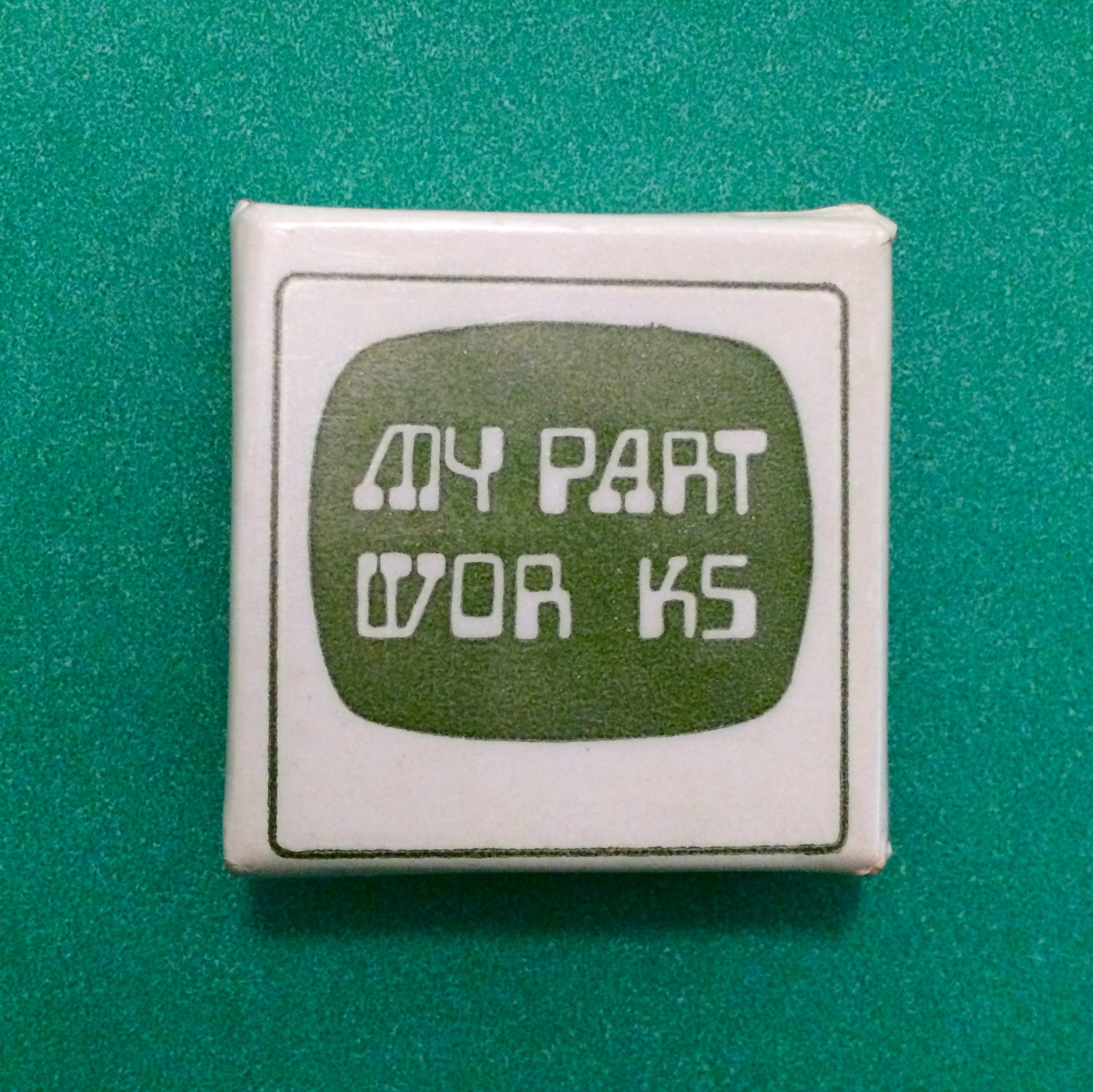 About 50 years ago, Andy van Dam joined the Brown University faculty with the world's second PhD in Computer Science (earned at the University of Pennsylvania). Today many of Andy’s friends, faculty, students and former students are celebrating his 50 years at Brown with Stone Age, Iron Age and Machine Age panels. [ June 9, 2015 update: See event video: Celebrate with Andy: 50 Years of Computer Science at Brown University ]
About 50 years ago, Andy van Dam joined the Brown University faculty with the world's second PhD in Computer Science (earned at the University of Pennsylvania). Today many of Andy’s friends, faculty, students and former students are celebrating his 50 years at Brown with Stone Age, Iron Age and Machine Age panels. [ June 9, 2015 update: See event video: Celebrate with Andy: 50 Years of Computer Science at Brown University ]
Enterprise 2.0 - Are we there yet?
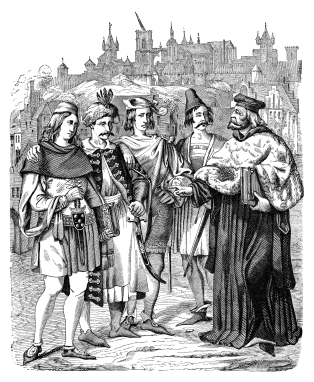 Andrew McAfee writes Nov 20, 2014: "Facebook’s recent announcement that it’s readying a version of its social software for workplaces got me thinking about Enterprise 2.0, a topic I used to think a great deal about. Five years ago I published a book with that title, arguing that enterprise social software platforms would be valuable tools for businesses...
Andrew McAfee writes Nov 20, 2014: "Facebook’s recent announcement that it’s readying a version of its social software for workplaces got me thinking about Enterprise 2.0, a topic I used to think a great deal about. Five years ago I published a book with that title, arguing that enterprise social software platforms would be valuable tools for businesses...
Why did it take so long? I can think of a few reasons. It’s hard to get the tools right — useful and simple software is viciously hard to make. Old habits die hard, and old managers die (or at least leave the workforce) slowly. The influx of ever-more Millennials has almost certainly helped, since they consider email antediluvian and traditional collaboration software a bad joke.
Whatever the causes, I’m happy to see evidence that appropriate digital technologies are finally appearing to help with the less structured, less formal work of the enterprise. It’s about time.
What do you think? Is Enterprise 2.0 finally here? If so, why now? Leave a comment, please, and let us know."
Ada Lovelace Day | Emmy Noether, Mathematician
Ada Lovelace Day celebrates 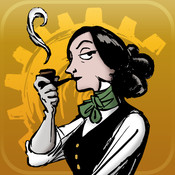 the contributions of women in science and technology, follow @FindingAda for news and events. This year I've chosen to write about mathematician Amalie "Emmy" Noether. At the time of her death in April 1935, she was described by Pavel Alexandrov, Albert Einstein, Herman Weyl, Norbert Weiner and others as the most important woman in the history of mathematics. Noether’s First Theorem is a fundamental tool of modern physics and the calculus of variations: every symmetry corresponds to a conservation law. "It was her work in the theory of invariants which led to formulations for several concepts of Einstein's general theory of relativity." [J J O'Connor and E F Robertson, 1997]. Of her later work, Nathan Jacobson said: "The development of abstract algebra, which is one of the most distinctive innovations of twentieth century mathematics, is largely due to her – in published papers, in lectures, and in personal influence on her contemporaries." Einstein wrote Noether's obituary in the New York Times, May 5, 1935:
the contributions of women in science and technology, follow @FindingAda for news and events. This year I've chosen to write about mathematician Amalie "Emmy" Noether. At the time of her death in April 1935, she was described by Pavel Alexandrov, Albert Einstein, Herman Weyl, Norbert Weiner and others as the most important woman in the history of mathematics. Noether’s First Theorem is a fundamental tool of modern physics and the calculus of variations: every symmetry corresponds to a conservation law. "It was her work in the theory of invariants which led to formulations for several concepts of Einstein's general theory of relativity." [J J O'Connor and E F Robertson, 1997]. Of her later work, Nathan Jacobson said: "The development of abstract algebra, which is one of the most distinctive innovations of twentieth century mathematics, is largely due to her – in published papers, in lectures, and in personal influence on her contemporaries." Einstein wrote Noether's obituary in the New York Times, May 5, 1935:
Named Data Networking - Boffin Alert
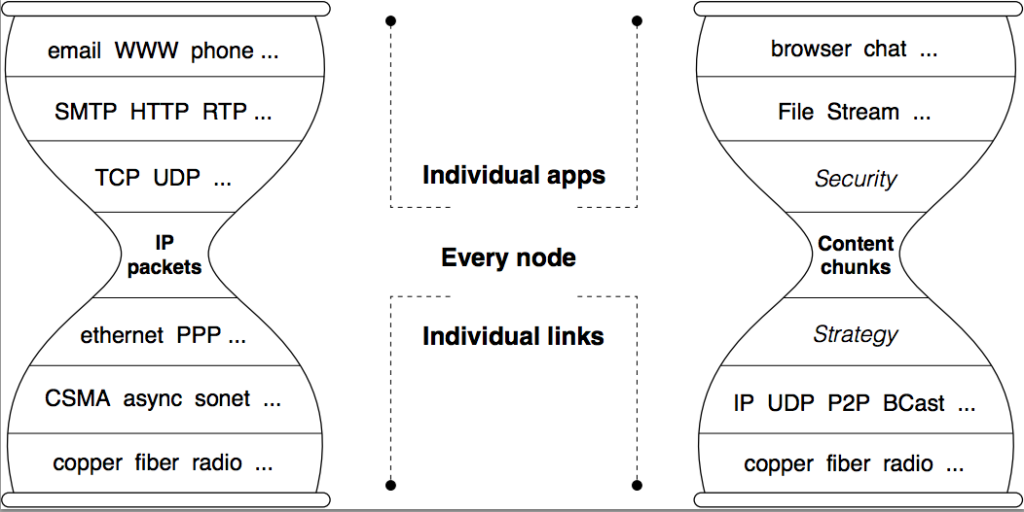 On Sep 4, 2014 the Named Data Networking project announced a new consortium to carry the concepts of Named Data Networking (NDN) forward in the commercial world. If this doesn't sound exciting, try The Register's take: DEATH TO TCP/IP cry Cisco, Intel, US gov and boffins galore. What if you could use the internet to access content securely and efficiently, where anything you want is identified by name rather than by its internet address? The NDN concept is technically sweet, gaining traction, and is wonderfully explained and motivated in a video by its principle inventor and instigator Van Jacobson. Read on for the video, a few quotes, reference links, and a few thoughts on what NDN could mean for the Internet of Things, Apple, Google and work on the Web. Short version: Bring popcorn.
On Sep 4, 2014 the Named Data Networking project announced a new consortium to carry the concepts of Named Data Networking (NDN) forward in the commercial world. If this doesn't sound exciting, try The Register's take: DEATH TO TCP/IP cry Cisco, Intel, US gov and boffins galore. What if you could use the internet to access content securely and efficiently, where anything you want is identified by name rather than by its internet address? The NDN concept is technically sweet, gaining traction, and is wonderfully explained and motivated in a video by its principle inventor and instigator Van Jacobson. Read on for the video, a few quotes, reference links, and a few thoughts on what NDN could mean for the Internet of Things, Apple, Google and work on the Web. Short version: Bring popcorn.
Linked, Open, Heterogeneous
%2dDDegler%2dApr2014%2d500w.png) Art, Data, and Business Duane Degler of Design For Context posted slides from his 5 April 2014 Museums and the Web talk, Design Meets Data (Linked, Open, Heterogeneous). Degler addresses what he calls the LAM (Libraries, Archives, Museums) Digital Information Ecosystem. I believe the same principles apply when businesses connect internal teams, external customers, external suppliers, and partners of all sorts as part of their Business Information Ecosystem. Read Degler's summary and slides, below:
Art, Data, and Business Duane Degler of Design For Context posted slides from his 5 April 2014 Museums and the Web talk, Design Meets Data (Linked, Open, Heterogeneous). Degler addresses what he calls the LAM (Libraries, Archives, Museums) Digital Information Ecosystem. I believe the same principles apply when businesses connect internal teams, external customers, external suppliers, and partners of all sorts as part of their Business Information Ecosystem. Read Degler's summary and slides, below:
Thought Vectors - Ted Nelson: Art not Technology
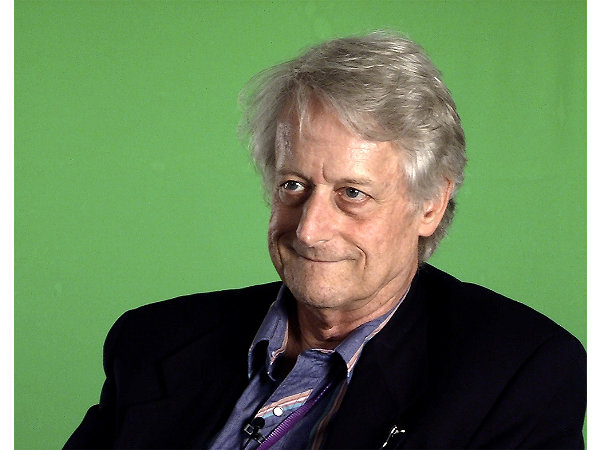 The technoid vision, as expressed by various pundits of electronic media, seems to be this: tomorrow's world will be terribly complex, but we won't have to understand it. Fluttering though halestorms of granular information, ignorant like butterflies, we will be guided by smell, or Agents, or leprechauns, to this or that pretty picture, or media object, or factoid. If we have a Question, it will be possible to ask it in English. Little men and bunny rabbits will talk to us from the computer screen, making us feel more comfortable about our delirious ignorance as we flutter through this completely trustworthy technological paradise about which we know less and less.
The technoid vision, as expressed by various pundits of electronic media, seems to be this: tomorrow's world will be terribly complex, but we won't have to understand it. Fluttering though halestorms of granular information, ignorant like butterflies, we will be guided by smell, or Agents, or leprechauns, to this or that pretty picture, or media object, or factoid. If we have a Question, it will be possible to ask it in English. Little men and bunny rabbits will talk to us from the computer screen, making us feel more comfortable about our delirious ignorance as we flutter through this completely trustworthy technological paradise about which we know less and less.
Meet Takashi Okutsu: Director, Traction Software Japanese Business Office
 Takashi has been a TeamPage wizard since 2007, and now directs Traction Software's Japanese Business Office. Takashi provides exceptional sales, consulting, and support to TeamPage customers in Japan. He is a valued member of the Traction Software global team, and a frequent contributor to the TeamPage Customer Support Forum including development and discussion of TeamPage SDK plug-ins and examples. We invite Japanese visitors to explore TractionSoftware.jp for TeamPage information and a free trial. You are also welcome to join the TeamPage Japan Customer Support Forum to talk with Takashi and Japanese TeamPage customers.
Takashi has been a TeamPage wizard since 2007, and now directs Traction Software's Japanese Business Office. Takashi provides exceptional sales, consulting, and support to TeamPage customers in Japan. He is a valued member of the Traction Software global team, and a frequent contributor to the TeamPage Customer Support Forum including development and discussion of TeamPage SDK plug-ins and examples. We invite Japanese visitors to explore TractionSoftware.jp for TeamPage information and a free trial. You are also welcome to join the TeamPage Japan Customer Support Forum to talk with Takashi and Japanese TeamPage customers.
Thought Vectors - What Motivated Doug Engelbart
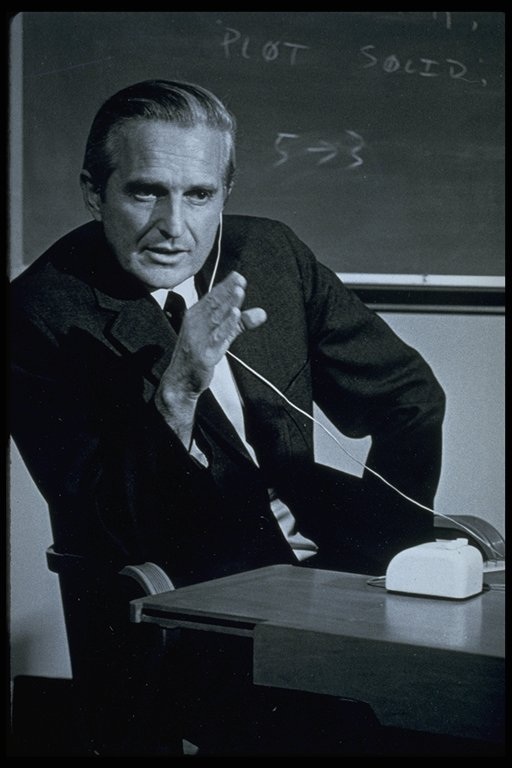 By "augmenting human intellect" we mean increasing the capability of a man to approach a complex problem situation, to gain comprehension to suit his particular needs, and to derive solutions to problems. Increased capability in this respect is taken to mean a mixture of the following: more-rapid comprehension, better comprehension, the possibility of gaining a useful degree of comprehension in a situation that previously was too complex, speedier solutions, better solutions, and the possibility of finding solutions to problems that before seemed insoluble. And by "complex situations" we include the professional problems of diplomats, executives, social scientists, life scientists, physical scientists, attorneys, designers--whether the problem situation exists for twenty minutes or twenty years. We do not speak of isolated clever tricks that help in particular situations. We refer to a way of life in an integrated domain where hunches, cut-and-try, intangibles, and the human "feel for a situation" usefully co-exist with powerful concepts, streamlined terminology and notation, sophisticated methods, and high-powered electronic aids. 1a1
By "augmenting human intellect" we mean increasing the capability of a man to approach a complex problem situation, to gain comprehension to suit his particular needs, and to derive solutions to problems. Increased capability in this respect is taken to mean a mixture of the following: more-rapid comprehension, better comprehension, the possibility of gaining a useful degree of comprehension in a situation that previously was too complex, speedier solutions, better solutions, and the possibility of finding solutions to problems that before seemed insoluble. And by "complex situations" we include the professional problems of diplomats, executives, social scientists, life scientists, physical scientists, attorneys, designers--whether the problem situation exists for twenty minutes or twenty years. We do not speak of isolated clever tricks that help in particular situations. We refer to a way of life in an integrated domain where hunches, cut-and-try, intangibles, and the human "feel for a situation" usefully co-exist with powerful concepts, streamlined terminology and notation, sophisticated methods, and high-powered electronic aids. 1a1
Reinventing the Web II
 Updated 19 Jun 2016 Why isn't the Web a reliable and useful long term store for the links and content people independently create? What can we do to fix that? Who benefits from creating spaces with stable, permanently addressable content? Who pays? What incentives can make Web scale permanent, stable content with reliable bidirectional links and other goodies as common and useful as Web search over the entire flakey, decentralized and wildly successful Web? Here's a good Twitter conversation to read:
Updated 19 Jun 2016 Why isn't the Web a reliable and useful long term store for the links and content people independently create? What can we do to fix that? Who benefits from creating spaces with stable, permanently addressable content? Who pays? What incentives can make Web scale permanent, stable content with reliable bidirectional links and other goodies as common and useful as Web search over the entire flakey, decentralized and wildly successful Web? Here's a good Twitter conversation to read:
60% of my fav links from 10 yrs ago are 404. I wonder if Library of Congress expects 60% of their collection to go up in smoke every decade.
— Bret Victor (@worrydream) June 15, 2014
Thought Vectors - Vannevar Bush and Dark Matter
 On Jun 9 2014 Virginia Commonwealth University launched a new course, UNIV 200: Inquiry and the Craft of Argument with the tagline Thought Vectors in Concept Space. The eight week course includes readings from Vannevar Bush, J.C.R. Licklider, Doug Engelbart, Ted Nelson, Alan Kay, and Adele Goldberg. Assignments include blog posts and an invitation to participate on Twitter using the #thoughtvectors hashtag. The course has six sections taught at VCU, and an open section for the rest of the internet, which happily includes me! This week's assignment is a blog post based on a nugget that participants select from Vannevar Bush's 1945 essay As We May Think. Here's mine:
On Jun 9 2014 Virginia Commonwealth University launched a new course, UNIV 200: Inquiry and the Craft of Argument with the tagline Thought Vectors in Concept Space. The eight week course includes readings from Vannevar Bush, J.C.R. Licklider, Doug Engelbart, Ted Nelson, Alan Kay, and Adele Goldberg. Assignments include blog posts and an invitation to participate on Twitter using the #thoughtvectors hashtag. The course has six sections taught at VCU, and an open section for the rest of the internet, which happily includes me! This week's assignment is a blog post based on a nugget that participants select from Vannevar Bush's 1945 essay As We May Think. Here's mine:
Continuity and Intertwingled Work
 At Apple's WWDC 2014 on 2 Jun 2014, Apple demonstrated how to build a great user experience spanning a your iPhone, iPad, and Mac. Apple calls this OS level capability Continuity. It enables you to continue what you're doing across devices and applications by securely encapsulating your identity and the context of your action as an object. From picking up a draft email message started on an iPhone and continuing work with that draft on your Mac, to answering an incoming iPhone call on your Mac, I believe this opens the door for a level of seamless experience that everyone will want for personal use, their family, and at work.
At Apple's WWDC 2014 on 2 Jun 2014, Apple demonstrated how to build a great user experience spanning a your iPhone, iPad, and Mac. Apple calls this OS level capability Continuity. It enables you to continue what you're doing across devices and applications by securely encapsulating your identity and the context of your action as an object. From picking up a draft email message started on an iPhone and continuing work with that draft on your Mac, to answering an incoming iPhone call on your Mac, I believe this opens the door for a level of seamless experience that everyone will want for personal use, their family, and at work.
A new TeamPage logo, and a new look at Traction Software.com
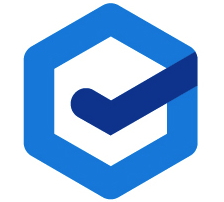 You'll be seeing the new TeamPage logo here, on Twitter, Facebook, across the Web, and next to TeamPage sites shown in your browser's tabs; I hope you like the it! I also hope you like the the new look at TractionSoftware.com. Our customers believe TeamPage is ideal for work that combines collaboration and action tracking, including quality management, human resources, project work, intelligence analysis, knowledge management, and compliance. We want TractionSoftware.com to tell this story simply and clearly, and we'll continue to improve this site just as we continually improve TeamPage. Please contact us for insights into how customers use TeamPage to get work done, along with a free trial.
You'll be seeing the new TeamPage logo here, on Twitter, Facebook, across the Web, and next to TeamPage sites shown in your browser's tabs; I hope you like the it! I also hope you like the the new look at TractionSoftware.com. Our customers believe TeamPage is ideal for work that combines collaboration and action tracking, including quality management, human resources, project work, intelligence analysis, knowledge management, and compliance. We want TractionSoftware.com to tell this story simply and clearly, and we'll continue to improve this site just as we continually improve TeamPage. Please contact us for insights into how customers use TeamPage to get work done, along with a free trial.
An Infinite Number of Cats on Keyboards: Ted Nelson & Computer Lib at Homebrew Computer Club Reunion
Order a perfect reprint of the original version of Computer Lib / Dream Machines directly from Ted Nelson, autographed if you wish. Highly recommended.
Ada Lovelace Day | Marissa Ann Mayer, Software Engineer, Product Manager, and Executive
Ada Lovelace Day celebrates  the contributions of women in science and technology, follow @FindingAda for news and events. This year I've chosen to write about Marissa Ann Mayer Software Engineer, Product Manager, and Executive, currently President and CEO of Yahoo! Over her career Ms Mayer earned exceptional recognition for Computer Science teaching (while working for her Stanford degrees), software engineering, design, product management, and her executive skills. Ms Mayer joined Google as employee number twenty in 2009 and played an instrumental role leading Google Search for over 10 years.
the contributions of women in science and technology, follow @FindingAda for news and events. This year I've chosen to write about Marissa Ann Mayer Software Engineer, Product Manager, and Executive, currently President and CEO of Yahoo! Over her career Ms Mayer earned exceptional recognition for Computer Science teaching (while working for her Stanford degrees), software engineering, design, product management, and her executive skills. Ms Mayer joined Google as employee number twenty in 2009 and played an instrumental role leading Google Search for over 10 years.
 I18N ERROR: @tsiskin#footer_RSS_Feed
I18N ERROR: @tsiskin#footer_RSS_Feed